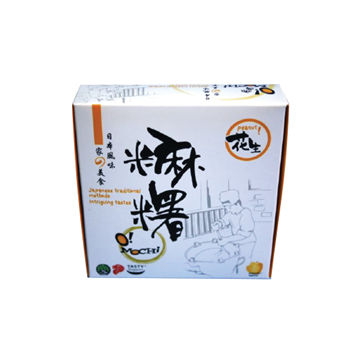Notifications

8 minutes, 20 seconds
-18 Views 0 Comments 0 Likes 0 Reviews

Frozen mochi has become a blissful marriage between traditional Japanese sweetmaking and modern dessert innovation. This little snack consisting of soft rice powder exterior filled with ice cream is stealing the hearts of people everywhere! In this free resource, we explore the history, making, and popularity of mochi and how it has transcended cultural barriers and evolved in today's world.
Mochi, a rice cake made from sticky rice pounded into a chewy, pliable texture, is a time-honored classic in Japanese cuisine. Traditionally eaten during celebrations such as the Japanese New Year for its symbolic meaning of good fortune, mochi signifies longevity. It was early days and the labor-intensive mochitsuki—mochi-pounding—process was a communal one in a spirit that culturally values mochi for its bonding power.
The Evolution of Frozen Mochi
Whereas the current trend is for freshly prepared mochi, historically mochi was also often yearned stored for when it becomes hard or frozen as way to enjoy it with different texture and taste. In areas such as Fukushima Prefecture, “Mochi Tsuki,” or frozen mochi ( rice cakes), has been prepared as preserved food product as a method to use the cold climate of winter to hold on to the freshness. This way, we are able to freeze and thaw mochi several times, and it will get dried, hardened and long-lasting all year.
In the late 20 th century, the creation of frozen mochi ice cream introduced another twist to this indulgent treat. Japanese-American businesswoman Frances Hashimoto made the concept of a wrap of pounded, elastic mochi enfolding ice cream popular, taking the chewy texture of mochi and the creamy coolness of ice cream. Not only did this adaptation take mochi to new senses of sensation, It also made mochi accessible to a global audience.
Making frozen mochi is like a labor of love for the perfect texture and flavor. The key ingredient is mochiko, which is sweet rice flour that is finely milled glutinous rice. This is mixed with water and sugar until a sticky dough is formed and is then steamed and pounded smooth. The dough is pressed and spun around fillings like ice cream or sweet bean paste, then frozen and set.
To keep frozen mochi nice and soft, you have to pay close attention to preventing dehydration and sticking. Coating the prepared balls with potato starch before you freeze them will keep them soft and prevent them from sticking together. If you wrap each piece individually in plastic wrap (place in a container in a single layer after that), you protect them even more against freezer burn and becoming dry.
USE SHARING Awesummly And Now It's Advent We Have This Cool Shit Served And Eaten Frozen Mochi
Frozen mochi is best when given 5 to 10 minutes at room temperature. This short release also helps tenderise the outer layer, so when the insects do chew it they can maintain their work. Setting frozen mochi on a pretty plate with fresh fruit or a drizzle of chocolate sauce makes it more of a looker and a bit of an experience in eating.
Trending Flavors and Innovations
The possibilities of frozen mochi today include a multitude of flavors to suit different tastes. Flavors like matcha green tea, red bean or black sesame are still standard, and it highlights the simple, natural ingredients and not-so-sweet taste in each bite. Creative combinations, such as salted caramel, mango, and cheesecake, have become available in modern renditions catering to the current taste.
Some brands, like Mochidoki, have received attention for their artisan ingredients and flavors, like kuromitsu and pandan. Their dedication to offering superior ingredients like Piedmont hazelnuts and top quality matcha sets them apart from other grocery store alternatives.
Worldwide Popularity and Market Expansion
There are several factors that have contributed to the global expansion of mochi ice cream. Increasing popularity of Japanese cuisine around the world has paved the way for traditional and modern Japanese desserts. Social media is partly to blame: BEautiful shots of mochi ice cream have captured the curiosity of consumers. The photogenic nature of the dessert, a product of both its appearance and the fact that you’re encouraged to stir it together yourself from components that are either hot or cold, as well as the rise of sharing food experiences online, has increased the dish’s pervasiveness.
Also, the rising popularity of new and exotic flavors in the dessert category makes mochi ice cream a great alternative for those looking to try something new. This combined with its portion-controlled size and that it is perceived as a lighter dessert alternative, draws in the health-conscious sector.
Mochi ice cream is also gaining market with the increase in mochi ice cream brands worldwide. Companies including Little Moons in the UK and My/Mo Mochi Ice Cream in the US have seen large sales growth, including triple-digit growth year on year for some. Mochi ice cream is being sold at grocery stores and specialty markets around the world offering a range of flavors, making it a popular choice for dessert.
Conclusion
Mochi ice creams are a testament to how tradition and innovativeness can live in sweet harmony. Mochi Mochi can trace its origins from Japanese culture to today's world where it is a popular sweet treat with a background that is as rich and decadent as its flavors. And with brands testing the mochi waters with new ingredients and fans on the lookout for new culinary kicks, the popularity of frozen mochi looks set to continue its rise, establishing its place among an array of beloved global treats.

